#full stack backend developer
Explore tagged Tumblr posts
Text
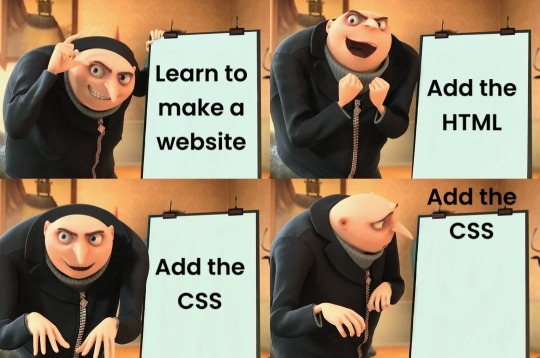
#programmer humor#programming#geek#nerd#programmer#technology#computer#phone#mac#windows#os#operating system#website#web development#dev#developer#development#full stack developer#frontend#backend#software#hardware#html#css#meme#despicable me#gru#joke#software engineer#apple
478 notes
·
View notes
Text
Unleash the Power of Rewards: A Comprehensive Earning Platform
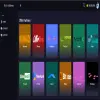
Demo : https://cancoda.com
User Features:
🏠 Home Page Create a captivating first impression with a dynamic landing page that showcases an array of rewarding opportunities available at your users' fingertips.
💰 Earn Page Maximize your users' earning potential by offering a diverse range of options, such as engaging surveys, custom offers, and more. Provide endless earning opportunities that keep users coming back.
💳 Cash Out Page Allow users to seamlessly convert points into real-world value with multiple payout methods. Admins can add custom methods, including cash, skins, and gift cards, offering flexibility for every user.
🏆 Leaderboard Encourage healthy competition with a dynamic leaderboard, motivating users to earn more and reach the top.
🌟 Daily Winners Highlight daily winners to celebrate their achievements and keep excitement high. Reward dedication and encourage ongoing participation.
📈 Transactions Page Ensure transparency and trust by enabling users to easily track their transaction history, offering a seamless and reliable earning experience.
📊 Analytics Gain valuable insights into user behavior, offer performance, and overall site engagement. Use these insights to make data-driven decisions for continuous growth and improvement.
🔥 Live Offer Walls Provide users with real-time access to top-performing offer walls, keeping the opportunities fresh and abundant for maximum engagement.
👥 Community Foster a vibrant, interactive community where users can connect, share tips, and celebrate their rewards journey together.
🆘 Support Our dedicated support section ensures prompt assistance, guaranteeing a seamless experience for both administrators and users alike. Your success is our priority!
Admin Features:
Comprehensive Control for Seamless Management
🏠 Home Page Customization Easily update content and layout to match your brand’s vision. Personalize the website to provide a unique experience for users.
👥 User Management Effortlessly manage user accounts, ensuring smooth operations and enhancing user retention.
💳 User Withdrawals Handle withdrawals efficiently, offering timely payouts through various methods to keep users satisfied.
🚫 Banned Users Maintain a secure and respectful community by managing banned users effectively.
💬 User Chat Enable real-time communication between users to foster collaboration, interaction, and engagement.
🔄 Referral Settings Boost platform growth with a powerful referral system that incentivizes existing users and attracts new ones.
📱 Social Media Integration Expand your reach by seamlessly connecting with social media platforms, driving organic growth and increasing exposure.
📊 Manage Offers Control the offers available to users, ensuring a diverse selection that maximizes their earning potential.
💵 Payment Methods Customize the payout options to offer users a variety of convenient and flexible methods.
🚀 Live Offer Walls Stay competitive by keeping live offer walls up to date with the latest opportunities, providing users with fresh, lucrative options.
⚙️ Settings Refine platform settings to optimize performance and deliver a seamless, user-friendly rewards experience.
API and Offer Integration
Manage and customize API integrations for various networks, including:
Torox
Adgatemedia
Lootably
Revlum, etc.
Add custom offers and offer walls in the same way as API offers, ensuring a flexible, customizable rewards system.
Postbacks & Analytics Access all postback URLs for networks in one centralized location. Manage and monitor data effectively to make informed decisions.
Free Features Enjoy access to a variety of features, including multiple postbacks, all at no additional cost.
cancoda - Overview
https://www.linkedin.com/in/hansaldev/
6 notes
·
View notes
Text
Fellow programmers:
#full stack developer#code#codeblr#studyblr#study motivation#motivation#tumblr polls#my polls#my post#developer#front end development#software development#software#backenddevelopment#frontend developer#html5 css3#backend frameworks#frontenddevelopment#html css
11 notes
·
View notes
Text
youtube
#online courses#coding#graphic designing#web design#ict skills#india#hindi#gujarati#english#www.ictskills.in#online training#live training#full stack course#digital marketing#ui ux design#backend#online#live courses#courses#education#computer science#engineering#java#python#php#dot net development company#spring mvc#javascript#Youtube
2 notes
·
View notes
Text
How to Choose the Right Tech Stack for Your Web App in 2025

In this article, you’ll learn how to confidently choose the right tech stack for your web app, avoid common mistakes, and stay future-proof. Whether you're building an MVP or scaling a SaaS platform, we’ll walk through every critical decision.
What Is a Tech Stack? (And Why It Matters More Than Ever)
Let’s not overcomplicate it. A tech stack is the combination of technologies you use to build and run a web app. It includes:
Front-end: What users see (e.g., React, Vue, Angular)
Back-end: What makes things work behind the scenes (e.g., Node.js, Django, Laravel)
Databases: Where your data lives (e.g., PostgreSQL, MongoDB, MySQL)
DevOps & Hosting: How your app is deployed and scaled (e.g., Docker, AWS, Vercel)
Why it matters: The wrong stack leads to poor performance, higher development costs, and scaling issues. The right stack supports speed, security, scalability, and a better developer experience.
Step 1: Define Your Web App’s Core Purpose
Before choosing tools, define the problem your app solves.
Is it data-heavy like an analytics dashboard?
Real-time focused, like a messaging or collaboration app?
Mobile-first, for customers on the go?
AI-driven, using machine learning in workflows?
Example: If you're building a streaming app, you need a tech stack optimized for media delivery, latency, and concurrent user handling.
Need help defining your app’s vision? Bluell AB’s Web Development service can guide you from idea to architecture.
Step 2: Consider Scalability from Day One
Most startups make the mistake of only thinking about MVP speed. But scaling problems can cost you down the line.
Here’s what to keep in mind:
Stateless architecture supports horizontal scaling
Choose microservices or modular monoliths based on team size and scope
Go for asynchronous processing (e.g., Node.js, Python Celery)
Use CDNs and caching for frontend optimization
A poorly optimized stack can increase infrastructure costs by 30–50% during scale. So, choose a stack that lets you scale without rewriting everything.
Step 3: Think Developer Availability & Community
Great tech means nothing if you can’t find people who can use it well.
Ask yourself:
Are there enough developers skilled in this tech?
Is the community strong and active?
Are there plenty of open-source tools and integrations?
Example: Choosing Go or Elixir might give you performance gains, but hiring developers can be tough compared to React or Node.js ecosystems.
Step 4: Match the Stack with the Right Architecture Pattern
Do you need:
A Monolithic app? Best for MVPs and small teams.
A Microservices architecture? Ideal for large-scale SaaS platforms.
A Serverless model? Great for event-driven apps or unpredictable traffic.
Pro Tip: Don’t over-engineer. Start with a modular monolith, then migrate as you grow.
Step 5: Prioritize Speed and Performance
In 2025, user patience is non-existent. Google says 53% of mobile users leave a page that takes more than 3 seconds to load.
To ensure speed:
Use Next.js or Nuxt.js for server-side rendering
Optimize images and use lazy loading
Use Redis or Memcached for caching
Integrate CDNs like Cloudflare
Benchmark early and often. Use tools like Lighthouse, WebPageTest, and New Relic to monitor.
Step 6: Plan for Integration and APIs
Your app doesn’t live in a vacuum. Think about:
Payment gateways (Stripe, PayPal)
CRM/ERP tools (Salesforce, HubSpot)
3rd-party APIs (OpenAI, Google Maps)
Make sure your stack supports REST or GraphQL seamlessly and has robust middleware for secure integration.

Step 7: Security and Compliance First
Security can’t be an afterthought.
Use stacks that support JWT, OAuth2, and secure sessions
Make sure your database handles encryption-at-rest
Use HTTPS, rate limiting, and sanitize inputs
Data breaches cost startups an average of $3.86 million. Prevention is cheaper than reaction.
Step 8: Don’t Ignore Cost and Licensing
Open source doesn’t always mean free. Some tools have enterprise licenses, usage limits, or require premium add-ons.
Cost checklist:
Licensing (e.g., Firebase becomes costly at scale)
DevOps costs (e.g., AWS vs. DigitalOcean)
Developer productivity (fewer bugs = lower costs)
Budgeting for technology should include time to hire, cost to scale, and infrastructure support.
Step 9: Understand the Role of DevOps and CI/CD
Continuous integration and continuous deployment (CI/CD) aren’t optional anymore.
Choose a tech stack that:
Works well with GitHub Actions, GitLab CI, or Jenkins
Supports containerization with Docker and Kubernetes
Enables fast rollback and testing
This reduces downtime and lets your team iterate faster.
Step 10: Evaluate Real-World Use Cases
Here’s how popular stacks perform:

Look at what companies are using, then adapt, don’t copy blindly.
How Bluell Can Help You Make the Right Tech Choice
Choosing a tech stack isn’t just technical, it’s strategic. Bluell specializes in full-stack development and helps startups and growing companies build modern, scalable web apps. Whether you’re validating an MVP or building a SaaS product from scratch, we can help you pick the right tools from day one.
Conclusion
Think of your tech stack like choosing a foundation for a building. You don’t want to rebuild it when you’re five stories up.
Here’s a quick recap to guide your decision:
Know your app’s purpose
Plan for future growth
Prioritize developer availability and ecosystem
Don’t ignore performance, security, or cost
Lean into CI/CD and DevOps early
Make data-backed decisions, not just trendy ones
Make your tech stack work for your users, your team, and your business, not the other way around.
1 note
·
View note
Text
Project update (Next.js) + little API routing tutorial
So my last post was about setting up my back-end using Node.js and Sequelize. After setting everything up it was time to create needed routes and queries. I didn't look too much into how to do it, just made an api folder, made a .ts file for every table I have in my database and filled it with CRUD operations + whatever additional query was needed.

After writing all of this I wondered how do I define links for all of these operations? Well as it turns out, when you put files in an api folder in Next.js, they generate by themself, meaning all of my crud operations were now under the same /api/file_table_name link. Obviously that's bad news. It took me 2 days of rearranging (it wasn't hard, just boring XD) and I got this structure

(This is not an entire structure, just a snippet because the whole structure is kinda big and pointless for demonstration)
So now for getting host/api/tag we have an index.ts file which carries the createTag function which requires just a body that contains new tagName.
For host/api/tag/id we have the [id].ts which carries getTagById and DeleteTag function. Now how do we differentiate between those two operations when they are on the same link?

At the end of your file you should have a handler function for which you write the cases in which certain operation happen. In this case it only depends on the http method, but it is possible to add other cases such as potential query string (the on that start with ? in the link ex. api/posts?sort=asc). Here's the code example from my /stickerpack/[id].ts file

So this means the link is going to be host/api/stickerpack/id?type="".
What surprised me was that you don't fetch id with req.params.id, but you fetch everything with req.query, and Next.js I guess just figures out what is a parameter and what is not based on the file name. Another surprising thing is the obvious "id as any" situation XD. It did not work any other way. No idea why. I'll look it up when I get the energy.
That's my wisdom for today, if you have any questions feel free to ask me anywhere XD I'm no professional tho lol
#codeblr#progblr#code#nextjs#full stack web development#webdevelopment#student#studyblr#tutorial#programming#computer science#backend#nodejs#women in stem
32 notes
·
View notes
Text
The Roadmap to Full Stack Developer Proficiency: A Comprehensive Guide
Embarking on the journey to becoming a full stack developer is an exhilarating endeavor filled with growth and challenges. Whether you're taking your first steps or seeking to elevate your skills, understanding the path ahead is crucial. In this detailed roadmap, we'll outline the stages of mastering full stack development, exploring essential milestones, competencies, and strategies to guide you through this enriching career journey.

Beginning the Journey: Novice Phase (0-6 Months)
As a novice, you're entering the realm of programming with a fresh perspective and eagerness to learn. This initial phase sets the groundwork for your progression as a full stack developer.
Grasping Programming Fundamentals:
Your journey commences with grasping the foundational elements of programming languages like HTML, CSS, and JavaScript. These are the cornerstone of web development and are essential for crafting dynamic and interactive web applications.
Familiarizing with Basic Data Structures and Algorithms:
To develop proficiency in programming, understanding fundamental data structures such as arrays, objects, and linked lists, along with algorithms like sorting and searching, is imperative. These concepts form the backbone of problem-solving in software development.
Exploring Essential Web Development Concepts:
During this phase, you'll delve into crucial web development concepts like client-server architecture, HTTP protocol, and the Document Object Model (DOM). Acquiring insights into the underlying mechanisms of web applications lays a strong foundation for tackling more intricate projects.
Advancing Forward: Intermediate Stage (6 Months - 2 Years)
As you progress beyond the basics, you'll transition into the intermediate stage, where you'll deepen your understanding and skills across various facets of full stack development.

Venturing into Backend Development:
In the intermediate stage, you'll venture into backend development, honing your proficiency in server-side languages like Node.js, Python, or Java. Here, you'll learn to construct robust server-side applications, manage data storage and retrieval, and implement authentication and authorization mechanisms.
Mastering Database Management:
A pivotal aspect of backend development is comprehending databases. You'll delve into relational databases like MySQL and PostgreSQL, as well as NoSQL databases like MongoDB. Proficiency in database management systems and design principles enables the creation of scalable and efficient applications.
Exploring Frontend Frameworks and Libraries:
In addition to backend development, you'll deepen your expertise in frontend technologies. You'll explore prominent frameworks and libraries such as React, Angular, or Vue.js, streamlining the creation of interactive and responsive user interfaces.
Learning Version Control with Git:
Version control is indispensable for collaborative software development. During this phase, you'll familiarize yourself with Git, a distributed version control system, to manage your codebase, track changes, and collaborate effectively with fellow developers.
Achieving Mastery: Advanced Phase (2+ Years)
As you ascend in your journey, you'll enter the advanced phase of full stack development, where you'll refine your skills, tackle intricate challenges, and delve into specialized domains of interest.
Designing Scalable Systems:
In the advanced stage, focus shifts to designing scalable systems capable of managing substantial volumes of traffic and data. You'll explore design patterns, scalability methodologies, and cloud computing platforms like AWS, Azure, or Google Cloud.
Embracing DevOps Practices:
DevOps practices play a pivotal role in contemporary software development. You'll delve into continuous integration and continuous deployment (CI/CD) pipelines, infrastructure as code (IaC), and containerization technologies such as Docker and Kubernetes.
Specializing in Niche Areas:
With experience, you may opt to specialize in specific domains of full stack development, whether it's frontend or backend development, mobile app development, or DevOps. Specialization enables you to deepen your expertise and pursue career avenues aligned with your passions and strengths.
Conclusion:
Becoming a proficient full stack developer is a transformative journey that demands dedication, resilience, and perpetual learning. By following the roadmap outlined in this guide and maintaining a curious and adaptable mindset, you'll navigate the complexities and opportunities inherent in the realm of full stack development. Remember, mastery isn't merely about acquiring technical skills but also about fostering collaboration, embracing innovation, and contributing meaningfully to the ever-evolving landscape of technology.
#full stack developer#education#information#full stack web development#front end development#frameworks#web development#backend#full stack developer course#technology
10 notes
·
View notes
Text
#What is Full Stack#What is Frontend Development#Front End Development Skills#What is Backend Development#Backend Development Skills#Who is a Full-Stack Developer#Salary of Full Stack Developer#Full Stack Development Course
1 note
·
View note
Text
i love when companies frame them wanting to pay fewer people as some kind of personal development opportunity or job title lol. 'we're looking for full-stack developers', 'we're looking for T-shaped developers'
yea ok so you're cutting costs by expecting people to be able to do everything
#like obvs there's genuinely people who /are/ 'full-stack' or their skillset /is/ “T-shaped”#idk that i'd consider myself to be a “”“T-shaped developer”“” but i think it's helpful to know how stuff works like backend/QA/design/etc#even tho i'm a front end dev. but that's bc it helps me collaborate w other people and understand where they're coming from better#there's nothing that annoys me more than developers who think they're better than testers/designers#but whenever i hear T-shaped or full-stack from a company esp right now it just sounds like 'we want to pay less people to do more'#maybe this is a hot take idk
4 notes
·
View notes
Text
Web Development & Portals | Aquil Tech Labs Nashik
Aquil Tech Labs provides comprehensive Web Development services backed by a seasoned team of designers and developers. From building responsive websites and custom CRMs to robust ERPs and unique portals, we deliver solutions tailored to your business objectives. Whether you're launching from scratch or revamping an existing site, our focus is on customer-driven features, scalability, and seamless user experience. We prioritize quality, timeliness, and cost-efficiency, ensuring every project—from concept to deployment—meets performance and conversion-driven goals. Collaborate with us for future-ready web assets that drive growth and elevate your digital presence.
#web development Nashik#CRM ERP portals#responsive website design#full-stack development#frontend backend team
0 notes
Text
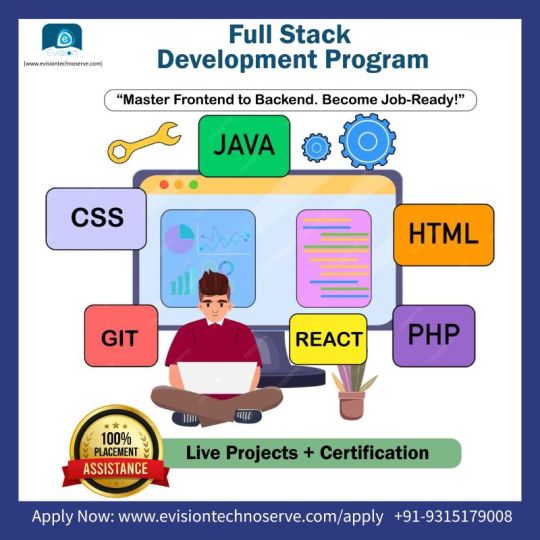
Master Full Stack Development with Live Projects + Certification - Evision Technoserve
Apply now for Internship and Job Opportunities at Evision Technoserve and become a job-ready Full Stack Developer! Our comprehensive training program covers everything from frontend to backend development, giving you the skills employers demand. Learn HTML, CSS, JavaScript, Java, PHP, React, and Git with real-time, hands-on projects. Gain practical experience, build a strong portfolio, and earn industry-recognized certification. Our job-oriented training is designed to help you learn, build, and get hired with 100% placement assistance. Start your development journey today!
#evisiontechnoserve#internship program#jobsearch#full stack developer training with live projects india#job ready full stack development course evision technoserve#frontend backend developer course with internship#php full stack development course for freshers
0 notes
Text
What are Java Variables and Why Are They Important in Programming?
When you first dive into Java, one of the main things you'll come across is variables. So, what are Java variables and why do they matter in programming? Simply put, they’re like containers that hold data for your program. They give you the flexibility you need to create cool applications. Grasping this idea is key to starting any Java course in Coimbatore.
The Basics of Java Variables
At the heart of it, Java variables are placeholders for data. Each variable has a specific type such as int, float, or String, which tells you what kind of data it can hold. Without them, managing data in your application would be tough. Knowing how to declare and use them is a must if you're looking at a Full Stack Developer Course in Coimbatore.
Types of Java Variables
Java has a few types of variables: local, instance, and static. Local variables exist only in methods, instance variables are tied to objects, and static variables belong to the class itself. Understanding these differences will help clarify what variables are and why they’re important in programming. You’ll go over this in detail during any professional Java training in Coimbatore.
Why Java Variables Matter
Java variables are important because they help developers write clean and logical code. They make it easier to reuse code and manage user input data effectively. This is why they are a key topic in any Java course in Coimbatore.
Declaring and Initializing Variables
To declare a variable in Java, you write the data type followed by the variable name, like so: `int age = 25;`. You can also set a value at a later point. This simple way of managing data shows why variables are important—they help you keep things organized, which is a vital skill you’ll learn in a Full Stack Developer Course in Coimbatore.
Scope and Lifetime of Variables
The scope of a Java variable refers to where it can be used in your code. For instance, a local variable is only available in the method where it's created. Getting a handle on variable scope will help you understand their importance in programming. You'll find this topic covered in detail during Java training sessions in Coimbatore.
Best Practices in Using Variables
Using clear variable names, keeping their scope small, and initializing them before use are some good habits that make programming easier. These practices show you what variables are and why they're important, and they’re stressed in every advanced Java course in Coimbatore.
Variables in Full Stack Development
In full stack Java development, variables are used in both the front-end and back-end parts of apps. They play a role in everything from handling UI inputs to managing databases. That’s why understanding what variables are and why they matter becomes even more relevant in a Full Stack Developer Course in Coimbatore where real-world projects are tackled.
Common Errors and Debugging Tips
Beginners often run into issues like forgetting to initialize variables or using the wrong data type. Spotting these mistakes is a big part of learning about variables. Regular debugging sessions and hands-on practice in Java training in Coimbatore can help you work through these challenges.
Conclusion: Build Your Java Skills with Xplore IT Corp
To really get a grip on what Java variables are and why they matter, practical experience is essential. Whether you’re starting out or aiming for a full stack role, a solid understanding of variables and similar concepts is crucial. Sign up for a Java Course, Java Training, or Java Full Stack Developer Course in Coimbatore with Xplore IT Corp to kickstart your Java programming journey.
FAQs
1. What are Java variables?
Java variables are storage spots for data that can change while the program runs.
2. Why are variables important in Java programming?
They help in handling data, keeping your code clean, and supporting dynamic data operations.
3. Are Java variables covered in a full stack course?
Yes, they're a key part of programming logic and are thoroughly covered in a Full Stack Developer Course.
4. Can I learn about Java variables online in Coimbatore?
Definitely! Most online Java training programs cover variables and data types.
5. Is mastering variables necessary before learning advanced Java?
Yes, they are a fundamental concept, and getting a handle on them is important before moving on to more advanced topics.
#Java data types#variable declaration in Java#Java variable scope#types of variables in Java#Java programming basics#object-oriented programming in Java#local variables in Java#instance variables in Java#static variables in Java#Java syntax#Java full stack developer skills#Java coding for beginners#Java development training#Java backend programming#Java learning institute in Coimbatore
0 notes
Text

Niotechone is a top-tier web, mobile app, and custom software development company with 13+ years of expertise. Delivering over 1,000 successful projects in healthcare, fintech, eCommerce, and logistics, they specialize in scalable, secure, and user-friendly digital solutions tailored to meet complex business requirements with precision and innovation.
#android app development#custom application development#ui ux design#web development#app development services#backend development#full stack development#cross-platform app development#enterprise application development#frontend development
0 notes
Text
MERN Stack Developer Course – Live Online Training by Experts
Master full-stack development with Sunbeam’s Live Online MERN Stack Course led by Mr. Amit Kulkarni (Certified Docker & Kubernetes Expert). Learn React JS, Node.js, Express, and MySQL with hands-on coding, real-world projects, and live Q&A. 📅 Start Date: 2nd June 2025 🕘 Time: 9:00 PM – 11:00 PM (Mon–Thu) 💰 Fees: ₹9100 (Inclusive of GST) 🎓 Includes Certification + Project + Group Discount 🔗 Register now: www.sunbeaminfo.in 📞 Call: 82 82 82 9806
✅ Group Discount Offer:
👨👩👧👦 Team of Five – Time to Thrive! 🎉 Enroll with a group of 5 and get 20% OFF on your learning journey!
✅ Course Highlights:
Frontend: ReactJS, Hooks, Axios, Routing
Backend: Node.js, Express.js, APIs
Database: MySQL CRUD operations
JWT Authentication, CORS, Middleware
RESTful Integration & Full-Stack Deployment
✅ Ideal for:
IT Students & Graduates
Working Developers
Anyone with knowledge of OOP, HTML, CSS, JS & SQL
✅ What You’ll Gain:
Full-stack development confidence
Real-world project exposure
Live instructor-led classes & doubt-clearing
Course material & Sunbeam certification
#MERN stack course#online MERN training#React JS classes#Node JS course#Express JS training#MySQL backend#Full Stack Developer course#Live coding classes#Sunbeam MERN#web development course
0 notes
Text
I Watched My Team Burn Out — Until We Discovered This One DevOps Habit
This article is published by me on Medium for educational purposes.
0 notes
Text
Backend update
Had the most horrible time working with Sequelize today! As I usually do whenever I work with Sequelize! Sequelize is an SQL ORM - instead of writing raw SQL, ORM gives you an option to code it in a way that looks much more like an OOP, which is arguably simpler if you are used to programming that way. So to explain my project a little bit, it's a full stack web app - an online photo editor for dragging and dropping stickers onto canvas/picture. Here is the diagram.
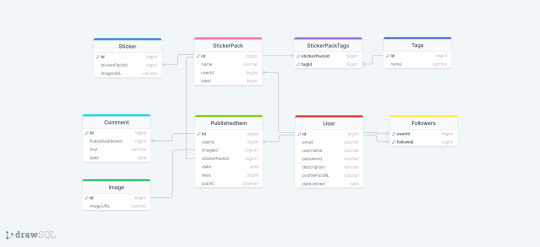
I'm doing it with Next which I've never used before, I only did vanilla js, React and a lil bit of Angular before. The architecture of a next project immediately messed me up so much, it's way different from the ones I've used before and I often got lost in the folders and where to put stuff properly (this is a huge thing to me because I always want it to be organized by the industry standard and I had no reference Next projects from any previous jobs/college so it got really overwhelming really soon :/) . The next problem was setting up my MySQL database with Sequelize because I know from my past experience that Sequelize is very sensitive to where you position certain files/functions and in which order are they. I made all the models (Sequelize equivalent of tables) and when it was time to sync, it would sync only two models out of nine. I figured it was because the other ones weren't called anywhere. Btw a fun fact
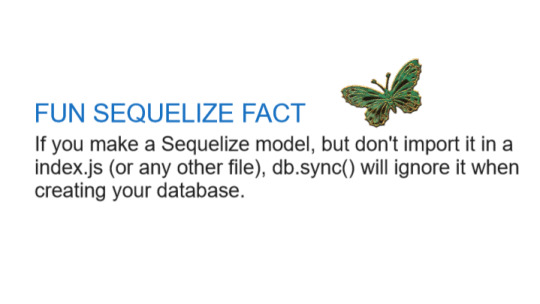
So I imported them to my index.js file I made in my database folder. It was reporting an db.define() is not a function error now. That was weird because it didn't report that for the first two tables that went through. To make a really long story short - because I was used to an server/client architecture, I didn't properly run the index.js file, but just did an "npm run dev" and was counting on all of the files to run in an order I am used to, that was not the case tho. After about an hour, I figured I just needed to run index.js solo first. The only reasons those first two tables went through in the beginning is because of the test api calls I made to them in a separate file :I I cannot wait to finish this project, it is for my bachelors thesis or whatever it's called...wish me luck to finish this by 1.9. XD
Also if you have any questions about any of the technologies I used here, feel free to message me c: <3 Bye!
#codeblr#code#programming#webdevelopment#mysql#nextjs#sequelize#full stack web development#fullstackdeveloper#student#computer science#women in stem#backend#studyblr
15 notes
·
View notes